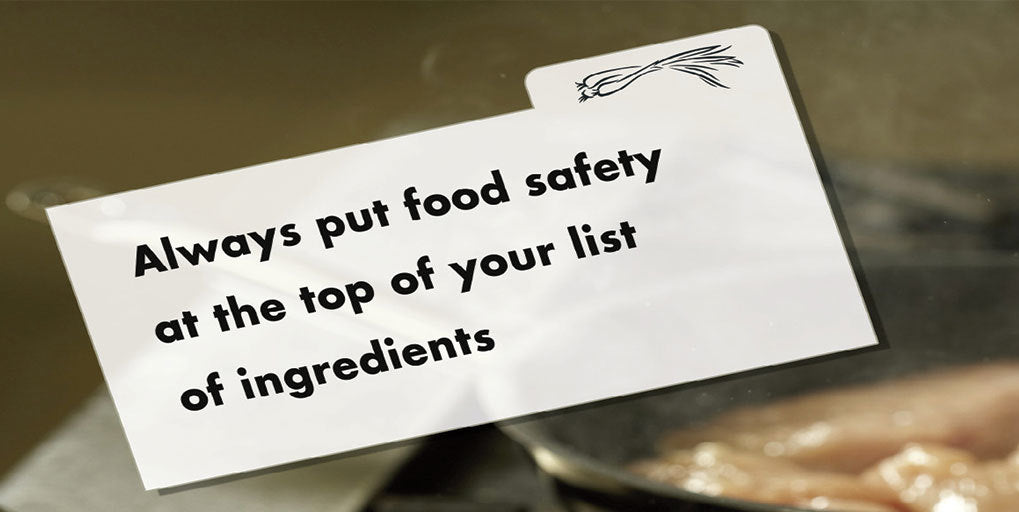
How to Avoid a Food Poisoning Disaster

When you walk into your favorite restaurant, you expect a delicious meal paired with your favorite beverage. The last thing your palate wants to savor is a piece of meat that’s spiced with contamination and bacteria because it’s been undercooked.
Just picture Gordon Ramsay walking through your restaurant flipping tables and breaking dishes. We all know the outcome – and it’s not a pretty sight. That’s why food safety is paramount. Every single piece of food, down to the tiny pieces of bacon used to add flavor to Carbonara dishes must never enter into the danger zone.
Entering the danger zone happens when heating and cooling practices result in the creation of serious foodborne illnesses. When your customers get sick, they’ll avoid your restaurant like the plague and tell everyone about their bad experience. Negative remarks spread like the smell of rotten fish. What’s worse – you could get in serious trouble with the health department and they could shut down your business.
Avoid these issues by paying close attention to the food temperature “Danger Zone”. The danger zones food temperatures 41 to 135 degrees Fahrenheit, with the most rapid bacteria growth occurring between 70 and 125 degrees Fahrenheit.
Taking it back to your food safety 101 course:
Per the United States Department of Agriculture (USDA), the longer food sits between 40 and 140 degrees Fahrenheit the more chance there is for bacteria to grow to unsafe levels. When bacteria grows on food, it will spoil and become dangerous for consumption.
When thawing frozen meat or fish, use clean, cold running water, or store contents on the bottom shelf of the refrigerator to prevent juice from dripping onto other ingredients. When thawing, it’s critical that the products remain in the original, watertight packaging and when marinating, place items in sealed containers.
What are ways to avoid food poisoning?
- When cooling – chill food to temperatures below 41 degrees.
- When heating – chefs must make sure the food temperatures stay above 141 degrees.
- When checking temperature – Measure the internal temperature of meat, poultry, seafood, and other cooked foods with a meat probe thermometer.
The U.S. Department of Health & Human Services (HHS) recommends specific meat and poultry temperatures to ensure food safety. Follow the foodsafety.gov safe cooking temperatures for guidelines.
Remind workers about cross-contamination
When you’re preparing dishes, always remember to keep raw items away from other foods because they can become cross-contaminated. Items such as raw meat, poultry, seafood, and eggs are dangerous sources of bacteria such as salmonella and other contaminants. When raw foods are mixed with items like vegetables, fruits, cheese, and breads, they can cross-contaminate the other foods.
Prevent foods from entering the danger zone. If you’re guilty of any of these mistakes, according to the US Center for Disease Control and Prevention (CDC), food poisoning could occur:
- Poor personal hygiene and infected personnel
- Contaminated raw foods and ingredients
- Inadequate reheating
- Preparing food too far ahead of service
- Inadequate cooling and cold handling
- Inadequate hot holding
Always put food safety at the top of your list of ingredients!
Provide adequate food safety training and post food safety signs and notices throughout your kitchen and break areas to keep workers informed.
Browse kitchen safety handwashing signs at ComplianceSigns.com

